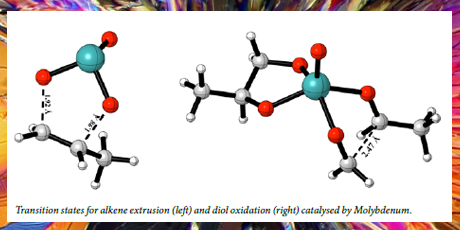
Systematic Innovation in Organic Chemistry
Computational methods can accelerate screening campaigns in organic chemistry.
The dominant method for discovering drug candidates and other new organic chemistry compounds is through extensive screening regimes, often involving tens of thousands of structurally similar molecules. This is both laborious and costly. The thesis investigates how such screening programs can be assisted by computational methods that strongly limit the number of potential candidates.
The thesis describes four projects using density functional theory (DFT) for mechanistic studies of organic reactions. The key parameter in DFT is the electron density, which can be described as the likelihood of finding an electron within a certain volume of space around the atom nucleus. A large advantage of DFT is the relatively low computational costs compared with other theories. This had led to application in a variety of fields. Examples include materials science, organometallics, and the study of drug metabolism.
In the first project, a mechanism for the molybdenum-catalyzed deoxydehydration of vicinal diols was suggested and compared to other possible mechanisms. It was furthermore applied to the Mo-catalyzed reduction of sulfoxides. The mechanism consists of two main steps, the diolate-cleavage from a bisdiolate Mo(VI) complex and the alkene extrusion from a monodiolate Mo(IV) complex.
In the second project, a mechanism consisting of oxidative addition, addition of hydrogen and reductive elimination was suggested for the nickel-catalyzed hydrogenolysis of aryl ethers. Good agreement between experimental and computational results supports the assumption of a selectivity-determining oxidative addition step.
The third project addresses the palladium-catalyzed C-H activation reaction of aryl sulfonamides. A mechanism involving an intramolecular proton abstraction by an acetate followed by coordination and insertion of methyl acrylate was suggested. Further, a possible pathway for the oxidation of the palladium catalyst was suggested.
Finally, in the fourth project it was attempted to find a mechanism for a chiral Brønsted acid-catalyzed cyclization reaction and to predict the enantio-selectivity of the reaction.
The conclusions drawn from all four projects were tested by comparison with experimental evidence and can hopefully be used to improve the efficiency and applicability of the examined reactions. Through this process, computational chemistry should be able to contribute to moving the field of organic chemistry away from its serendipitous nature and towards a more exact science that relies less on extensive screening.